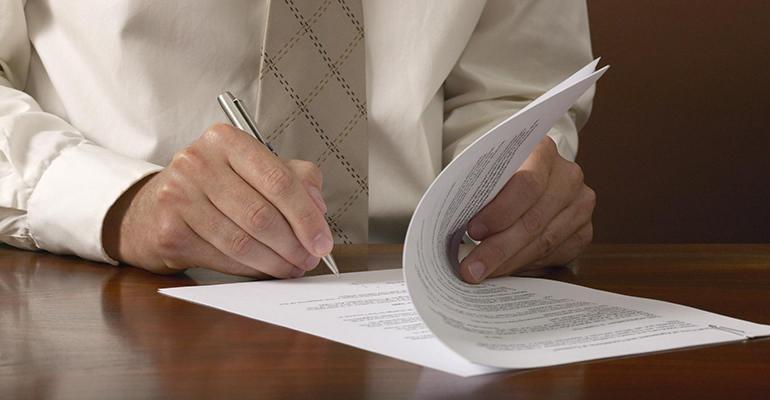In the restaurant industry, bankruptcy has long been seen as a last resort for small business owners, indicative of admitting defeat and likely resulting in liquidating assets and closing up shop for good.
But thanks to a new law passed shortly before the coronavirus pandemic began — the Small Business Reorganization Act— it’s easier and less expensive for small businesses with less than $2.7 million in debt to file for Chapter 11 bankruptcy.
We spoke with Joseph Pack, a New York and Florida-based bankruptcy attorney and founder of Pack Law, about destigmatizing bankruptcy for small businesses, and what restaurant owners can and should do if they find they can’t pay their rent, vendors, or lenders during the ongoing COVID-19 pandemic crisis.
Get on the phone and renegotiate with your lenders
When trying to get out of the hole of massive debt, the most important skill is clear and honest communication with your landlord, vendors, bank and investors.
“Owners should be getting on the phone with their bank and other lenders,” Pack said. “If they can afford to pay off their debt, they might want to enter a new modification of the loan than they had before that’s subject to realistic projections. Get on the phone with your lenders, even the person you bought your stove or espresso machine from, and figure out what their attitude is toward your reduced revenues.”
Pack broke it down with a simple example: If you’re paying off a high-end commercial espresso machine with $400 in monthly payments and now, because of the COVID-19 pandemic, you are unable to make your monthly payments, then get on the phone with the espresso machine seller and ask for a “modification of obligation.”
“The lender is thinking, ‘I could get $5,000-$6,000 for this $10,000 machine, or this restaurant owner could go into bankruptcy and their assets will be auctioned and then I’ll be lucky if I get $250 from that,’” Pack said. “Then the lender will be probably more likely to work with you than ever before.”
He warned, however, that business owners should be careful to not just ask for payment forgiveness because that’s just temporary.
“It’s not just about making payments; it’s also about debt covenants [agreements that a debtor will operate within the paradigms of a loan],” Pack said. “You have to make certain requirements on a monthly basis. The loan could still be in default even with payment forgiveness. There needs to be a sit-down and discussion about renegotiating obligation.”

Do not consolidate your debt
One of the most common solutions struggling business owners consider is to consolidate debt. Even though that might sound like a smart way to mitigate a growing mountain of debt, Pack said, “I have never met a business operator who said, ‘Boy, I’m glad I consolidated my debts! That was a real lifesaver!’
“Let’s say you have a loan at 1% interest, and you have another loan at 10% interest, and you go to a loan consolidation company and they combine those two loans into one $2 million loan at 5% interest,” Pack said. “Now, if you somehow come into $1 million and can pay down your debt, instead of paying off the original loan with 10% interest and only having to pay the loan at 1% interest, now you’re stuck with paying off half of a loan at 5% interest.”
Pack added that leaving your loans unconsolidated also benefits businesses filing for bankruptcy because it’s always in the debtor’s favor to have multiple lenders to “pick off” obligations and debt. With one large debt, you are “basically at their whim” and don’t have room to negotiate.
If you have to file for Chapter 11 bankruptcy, do so under the new Subchapter V of the bankruptcy code
Pack said that he wanted to destigmatize the concept of filing for bankruptcy, which — contrary to popular belief — does not mean you have to sell your business or close your doors completely. Filing for Chapter 11 has previously been mostly associated with larger companies that can afford federal court proceedings. But a new law, the Small Business Reorganization Act, which was passed in August 2019 and went into effect in February, helps small business approaching bankruptcy options.
The new Subchapter V of the Chapter 11 bankruptcy code allows small businesses with up to $7.5 million in debt to seek reorganization with the goal of keeping control of their business and their equity. Before the pandemic, the maximum debt was $2,725,625, but the eligibility standard was temporarily expanded under the Coronavirus Aid, Relief and Economic Security, or CARES Act, in March.
Small businesses don’t have to pay their lenders in full as long as they create a payment plan based on their balance sheet and cash flow within 90 days of filing, give their discretionary income to their creditors, and pay off as much of the loan as they can within three to five years.
“The [bankruptcy court] knows no one can run your Italian restaurant other than you and that you need to be there to make the pizza,” Pack said. “If the business is sold off to some private equity firm who have no idea what they’re doing, no one is going to want to eat the pizza and the restaurant will close anyway. [This plan] lets you keep your equity and your restaurant as long as you do your best to pay what you can over the next few years.”
Contact Joanna Fantozzi at [email protected]
Follow her on Twitter: @joannafantozzi





